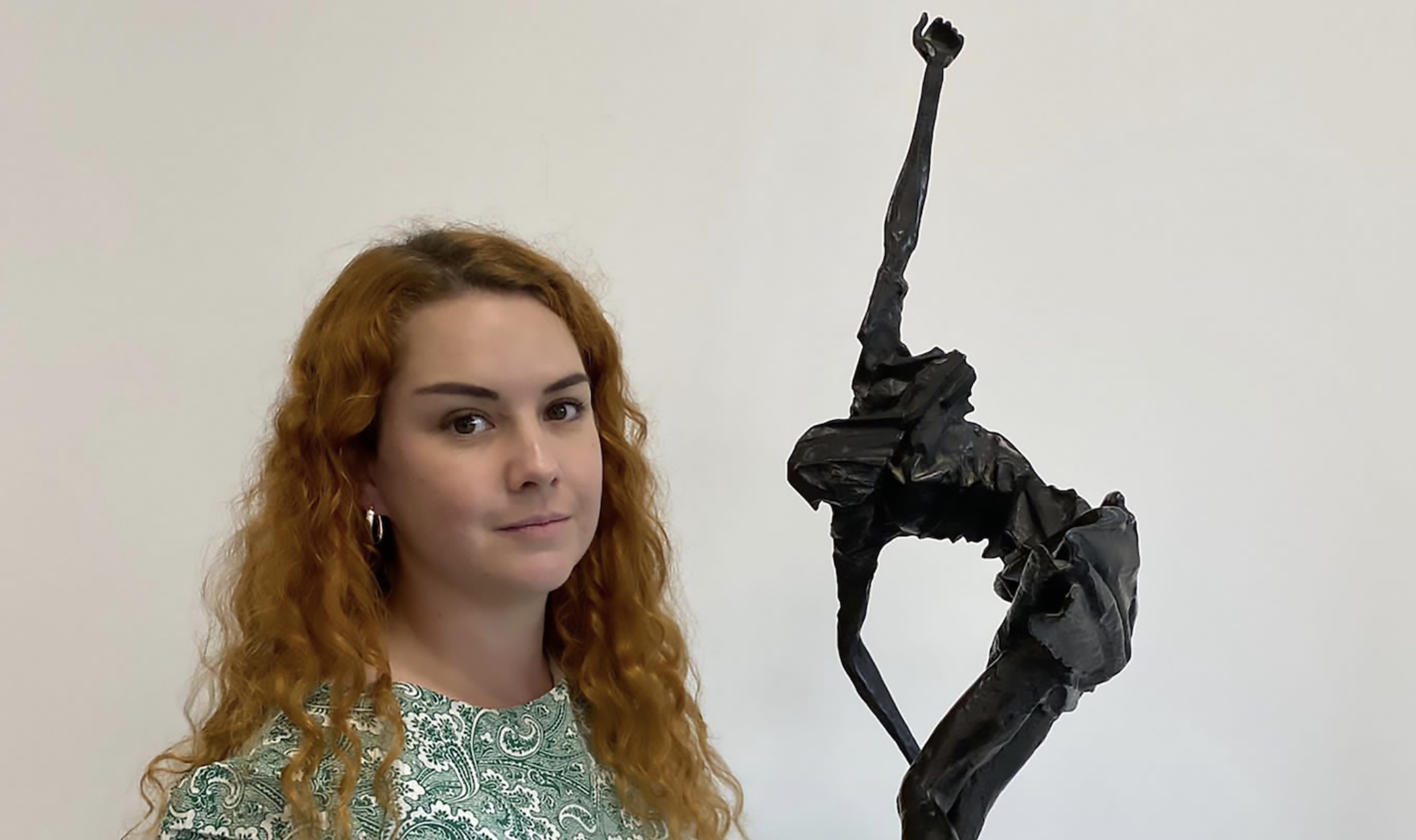#McWilliam #sculpture #Shrewsbury #sale #Antique #Collecting
 A sculpture by the leading Irish artist FE McWilliam CBE RA (1909-92), one of the most important sculptors of his generation, will be offered at Shrewsbury auction house, Halls.
A sculpture by the leading Irish artist FE McWilliam CBE RA (1909-92), one of the most important sculptors of his generation, will be offered at Shrewsbury auction house, Halls.
A close friend and colleague of Henry Moore, with work in Tate, the Met and V&A, a bronze from his celebrated The Women of Belfast series comes to auction at Halls on December 6 with an estimate of £25,000-30,000.
The sculpture, number XI form the series, is a fine example of McWilliam’s Surrealist style, exploring the relationship between objects and people and the spaces around them, and depicts a woman in contorted pose – almost as though dancing – and full of kinetic energy.

Produced in an edition of five, with this example numbered 3/5, it forms part of the landmark series that McWilliam created in response to the Abercorn Tea Room bombing in Belfast on March 4, 1972, which killed two young women and injured 130 during the Troubles.
It was an exceptional departure for the artist, whose work was rarely overtly political, but the series had a powerful impact in tune with the general revulsion at the outrage, which took place in a city centre restaurant on a Saturday afternoon packed with shoppers.
McWilliam worked on the series during the 1970s, depicting bronze figures of women as the victims of war. The Abercorn Tea Rooms were packed with diners at the time the bomb exploded at 4.30pm in the afternoon, having been disguised in a handbag on the floor. Two young women in their early twenties were killed instantly with other suffering catastrophic and life-changing injuries.
Women of Belfast memorialises not only the two tragic lives lost, but also all the victims who suffered during the height of The Troubles in Northern Ireland.
McWilliam, who once shared a home with Henry Moore in Buckinghamshire, was born in Banbridge, County Down, where a gallery dedicated to his art opened in 2008.
A graduate of both Belfast College of Art and The Slade in London, where he met Moore, he turned away from painting to become a sculptor under the influence of A.H. Gerrard, Head of Sculpture at the Slade and Moore himself.
Winning the Robert Ross Leaving Scholarship from the Slade gave him the money he needed to travel to Paris with his wife, where he visited the studio of Brancusi, an artist who was to become an important influence, especially after McWilliam visited the transformative International Surrealist Exhibition in London in 1936.
During the Second World War, he served in the Royal Air Force, interpreting aerial reconnaissance photographs before being posted to India, where he also taught art in the Hindu Art School in New Delhi.
This prepared him for future teaching posts, first at the Chelsea School of Art, and then at the Slade, where he continued to teach sculpture until 1968.
McWilliam remained active as a sculptor throughout, winning numerous major commissions, including the Four Seasons Group for the Festival of Britain exhibition in 1951, Archimedes for Technical College, Shrewsbury 1956; Princess Macha at Attnagelvin Hospital, Londonderry 1957; Man and Bird for Basildon New Town 1958; Figure (portrait of Elisabeth Frink) bought and publicly sited by Harlow Art Trust 1957; and Witch of Agnesi for Avery Hill Training College, Woolwich 1959.
Exhibiting internationally, he won several prizes, and his work can be found in numerous leading collections, including: Tate Gallery; Arts Council; British Government Art Collection; Victoria and Albert Museum, London; National Portrait Gallery, London; Sainsbury Centre for the Visual Arts, Norwich; Museum of Modern Art, New York. McWilliam was awarded an Honorary Doctor of Letters from Queen’s University, Belfast in 1964, and was appointed CBE in 1966. In 1971 he won the Oireachtas Gold Medal.
As one of the most influential 20th century Irish artists, The Arts Council of Northern Ireland organised a retrospective of his work in 1981 and a second retrospective was shown at the Tate Gallery in 1989 for his 80th birthday.
After he died of cancer in 1992, the executors of his estate donated the sculptor’s studio and its contents to the town of his birth. This led to the opening of the F.E. McWilliam Gallery and Studio in September 2008, with a permanent collection of the artist’s sculptures. It also includes a replica of McWilliam’s studio-workshop, including a large collection of maquettes for sculpted bronzes. The Sculpture Garden captures the spirit of McWilliam’s garden in which his studio was situated at his home in London’s Holland Park.
Abigail Molenaar, Fine Art specialist at Halls, said: “We are delighted to be able to offer such an important work by so influential an artist. The piece is captivating and conveys such an extraordinary energy that it would make a stunning addition to any collection.”




